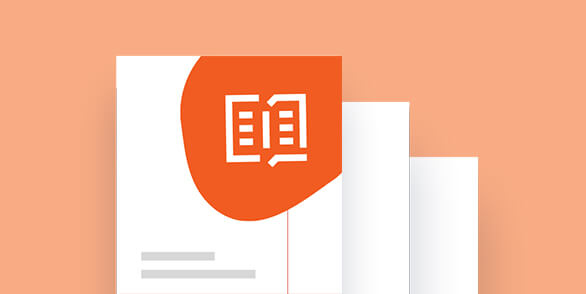HRIS, or human resources information system, is software designed to help businesses meet core HR needs and improve the productivity of both managers and employees. This is in large part possible because of automation and synchronized data, which may reduce costly redundancies and provide a trusted source of decision-making, respectively.
What does HRIS stand for?
HRIS stands for human resources information system. It’s related to human resources management system (HRMS) and human capital management (HCM), but there are some subtle differences among the three.
HRIS vs. HRMS vs. HCM
Both HRIS and HRMS can help employers manage various aspects of HR, such as payroll, benefits administration and compliance. Where they may differ is talent and performance management, which is sometimes exclusive to HRMS. HCM, meanwhile, refers to the broad set of people management practices that can be accomplished with HRIS and HRMS.
What does an HRIS do?
HRIS helps businesses use technology to enhance their people processes and make both HR and their organization as a whole more efficient. It stores key people information including workforce certification, performance, and salary information that can provide key insights to leaders making decisions on growth opportunities, compensation, learning programs, and retention strategies. As a result, businesses may be better able to keep pace with evolving workplace trends.

What are the benefits of HRIS?
In addition to improved workforce productivity, employers may find that HRIS helps them:
Make data-driven decisions
Some systems have predictive analytics, including forecasting and modeling, which can help HR professionals make more informed decisions.
Enhance user experiences
HRIS with user-friendly interfaces and mobile apps may make it easier to complete job applications, enroll in benefits and perform other HR tasks.
Reduce time-intensive labour
Common HRIS features – such as automation, analytics and artificial intelligence – may help cut the labour costs associated with payroll, time and attendance, and other manual administrative work.
Accommodate business growth
Cloud-based technology is scalable to handle to changing numbers of employees, transactions, data volume, and an organization’s expansion to new locations.
Maintain compliance
Some HRIS providers have monitoring capabilities to stay current with changing regulations and data security measures to help prevent incidents.
What are the features of HRIS software?
HRIS software provides personalized HR tools and scalable solutions that can help businesses tackle challenges as they grow. Some of the more common HRIS features include:
Recruitment and onboarding
HRIS helps recruiters scan resumes, perform preliminary candidate screenings and conduct background checks.
Payroll
In many cases, an HRIS will automatically deduct taxes and benefits from employee wages, which saves time and helps reduce the risk of error. Some systems also offer flexible pay options.
Time, attendance and scheduling
Time tracking in an HRIS often supports many types of workers and communicates directly with payroll to help improve accuracy.
Benefits administration
HRIS typically has broad capabilities to manage employer-offered benefits, such as health insurance and retirement savings plans, as well as voluntary benefits.
Compliance
Some HRIS have the ability to stay current with changes in tax laws and employment regulations as they occur.
Reports and analytics
A centralized data set for all HR metrics is sometimes available with HRIS. More sophisticated providers make data accessible on-demand and proactively push reports, alerts or actions to stakeholders.
Integrations
HRIS may integrate payroll, benefits and time-tracking into a unified system. Some can also sync with other enterprise systems or allow end users to create custom integrations.
What is an example of an HRIS system?
There are many examples of HRIS software available to organizations today. ADP, for instance, offers a solution based on your business size:
ADP Workforce Now®
Designed for mid-sized businesses, ADP Workforce Now provides an all-in-one platform to manage payroll, talent, benefits, time, people, analytics and more.
How do I choose an HRIS?
Choosing an HRIS is an important decision that may influence if certain business goals are met. Although the buying process isn’t entirely linear, the general steps are:
- Identify problems or challenges with current HR processes
- Explore how an HRIS can help overcome those obstacles
- Build an HRIS requirements checklist
- Evaluate HRIS vendors against the checklist
Should I get an HRIS for my business?
Every business has different needs, but some may want to consider getting an HRIS if they struggle to:
- Keep pace with evolving workforce demographics
- Hire independent contractors and freelancers
- Stay current with changing regulations
- Recruit workers with specialized skills
- Analyze workforce data effectively
- Make the most of team-based work structures
What should an HRIS have?
An HRIS should have the ability to meet not just the challenges of today, but also those that arise in the future. Afterall, most businesses wouldn’t want to have to purchase a new system every few years.
HRIS providers that can grow with the demands of the industry and the changing needs of clients tend to:
- Have service plans that extend beyond implementation
- Invest in innovation and regularly enhance their products
- Use internal and external benchmarks to measure performance
- Provide consultative services and define best practices
How to get started
Organizations looking to purchase an HRIS typically start by convincing stakeholders that a new approach to HR is needed. Business case proposals might explain how existing processes are holding the organization back and outline the functional requirements necessary to move forward. During this presentation, project leaders should be prepared to answer questions and gather feedback. Defining the strategic objectives and desired outcomes are key during this step, and an ideal opportunity to document stakeholder goals. Businesses that address stakeholder needs from the beginning are more likely to find the right HRIS vendor and ensure a smooth transition.
HRIS FAQs
See what other employers are asking about HRIS:
How do HRIS systems work?
HRIS systems work by integrating various HR functions into a unified system that shares data and outputs reports across the entire platform. In a typical example, information about an employee is entered during onboarding and then disseminated to payroll, benefits and time and attendance. Later, that data may be updated and shared again, as is often the case when employees receive a performance-based raise or bonus.
Why is an HRIS important?
HRIS is important because it connects people and workflows in ways that may support daily operations and improve productivity. It also aids in the collection and management of data necessary for regulatory compliance.
How can HRIS help a company?
HRIS helps businesses create innovative workforce strategies and deploy them effectively. This may be beneficial to organizations interested in adapting with new generations of employees who have different workplace expectations.
How does HRIS help recruitment?
Recruiters can use HRIS to create job posts, track candidate sources, run background checks and more. Some systems also offer compensation package benchmarking, which can help businesses compete for talent.
Does HRIS include payroll?
Because they are designed to alleviate administrative burdens, HRIS usually includes automated payroll, which can help save time and minimize mistakes.
Who uses an HRIS?
Businesses who need assistance managing the complexity of an evolving workforce tend to use an HRIS. This is especially true of enterprises that are seeking to grow, expand geographically or pursue mergers and acquisitions.
Is ADP an HRIS?
ADP is a global provider of cloud-based HRIS and HCM solutions that unify payroll, time tracking, HR services, talent management, tax, and benefits administration. Our cutting-edge technology helps businesses transform HR from an administrative function into a strategic business advantage.
What are the advantages and disadvantages of HRIS?
HRIS advantages include automated workflows, integrations between payroll and core HR services, and centralized data sets. Without the proper safety measures, however, these features could pose a security risk. Another potential drawback to HRIS is the cost, although, an effectively implemented and deployed solution should result in a positive return-on-investment (ROI) for an organization.
This article provides practical information concerning the subject matter and is provided with the understanding that ADP is not rendering legal or tax advice or other professional services.


